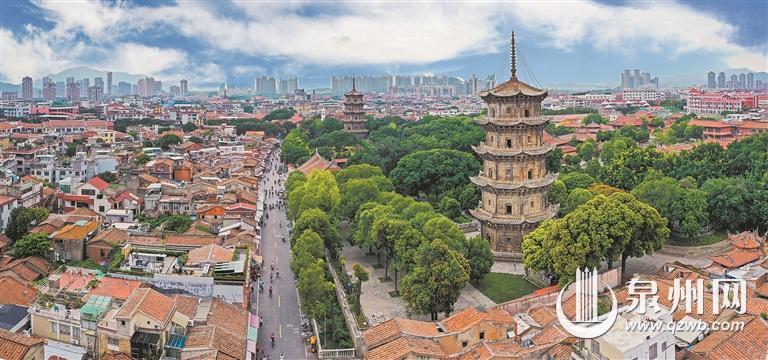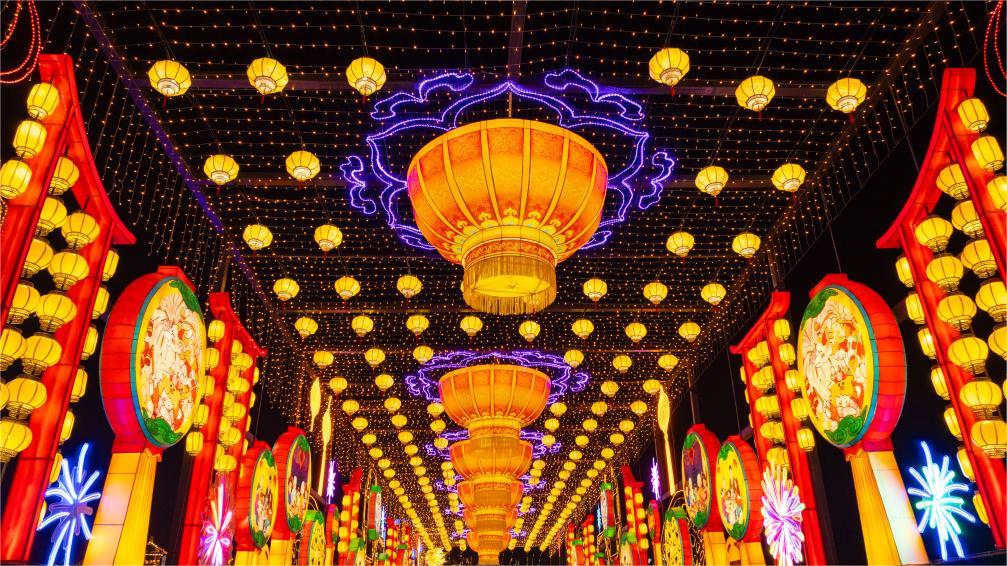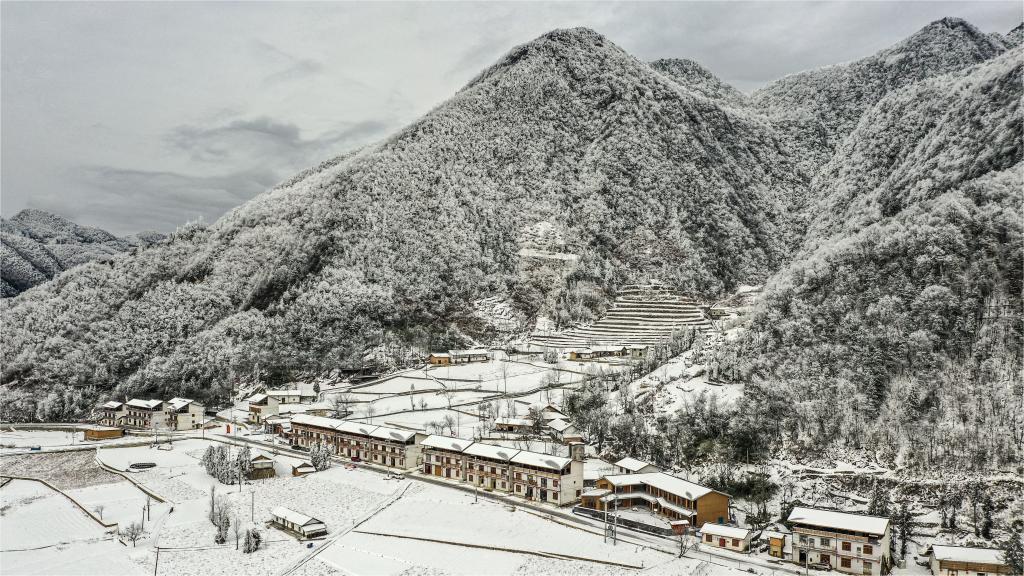Things to do in Quanzhou, UNESCO World Cultural Heritage city
Quanzhou, a coastal city in southeast China's Fujian Province, is renowned for its long history and rich culture. It was once the starting point of the ancient Maritime Silk Road and a global maritime trade center back in the Song (960-1279) and Yuan (1271-1368) dynasties.
In July 2021, UNESCO listed 22 sites in the city on its World Heritage List for its role as the "Emporium of the World in Song-Yuan China."
Quanzhou's profound history, cultural diversity, and architectural heritage make it a captivating destination. Here are some must-visit sites in this historic and cultural city!
Visit Quanzhou Ancient City
Located in Licheng district, Quanzhou Ancient City is essential for any visitor. Home to eight World Heritage sites, the entire ancient city falls within the UNESCO World Heritage Site's buffer zone.
One notable site is the Confucius Temple, which served both as a place for worshipping Confucius and as the most prestigious educational institution in Quanzhou during the Song and Yuan dynasties.

File photo shows a view of Quanzhou Ancient City in Quanzhou city, southeast China's Fujian Province. (Photo/qzwb.com)
Kaiyuan Temple was the largest and most significant government-sanctioned Buddhist temple in Quanzhou during the Song-Yuan era, and the Qingjing Mosque stands as one of China's oldest mosques.
The Tianhou Temple, dedicated to the sea goddess Mazu, is another notable site in Quanzhou. Additionally, the Site of Deji Gate marks the ruins of the southern gate to the ancient city.
The Site of the Southern Clan Office was an administrative center established for the imperial relatives of the Song Dynasty, who began relocating to Quanzhou in 1130.
Visitors can immerse themselves in the unique architectural styles, street and lane layouts, local customs, traditional culture, and religious practices, all meticulously preserved across the 173 streets and alleys of the ancient city.
For many tourists, a city walk is the ideal way to experience the ancient city.
A variety of cultural and tourism activities are also held in the core area of the ancient city during holidays.
Here are some recommended classic city walk routes in the ancient city:
The first route starts at the Bell Tower, passes through several alleys, and ends at the Confucius Temple via West Street.
The second route begins at Kaiyuan Temple and leads to West Street, the Bell Tower, the Confucius Temple, the Qingjing Mosque, and then to the Temple of Guan Yu and Yue Fei.
The third route takes you from Kaiyuan Temple to the Site of the Southern Clan Office, then to the Site of the Maritime Trade Office, followed by the Confucius Temple, the Qingjing Mosque, the Tianhou Temple, and the Site of Deji Gate, finally concluding at the Site of Shunji Bridge, which was the main access to ancient Quanzhou's commercial district.
Appreciate the moon
If you visit Quanzhou during the Mid-Autumn Festival, you'll have the chance to admire the moon at any of the 22 World Heritage sites and other ideal locations throughout the city.
You can savor tea and mooncakes on a teahouse's rooftop terrace on West Street, basking in the romantic sight of the moon rising behind Kaiyuan Temple's east and west pagodas.
Wanshou Pagoda in Shishi, a county-level city under Quanzhou's jurisdiction, is an ideal location to watch the moon ascending over the sea.

File photo shows the Qingjing Mosque, one of China's oldest mosques, in Quanzhou city, southeast China's Fujian Province. (Photo/qzwb.com)
Feel the grandeur of the moon from atop Qingyuan Mountain, a national 5A-class tourist spot where the Statue of Lao Tze stands, or watch the moon from Luoyang Bridge, which was a crucial transportation link connecting Quanzhou northward to Fuzhou, Fujian's capital, and to the nation's vast heartland during the Song-Yuan period.
The following World Heritage sites are excellent for moon viewing: the Statue of Lao Tze and Qingyuan Mountain, Kaiyuan Temple, Qingjing Mosque, Tianhou Temple, Site of Deji Gate, Luoyang Bridge, Anping Bridge, Liusheng Pagoda, Wanshou Pagoda, and the Estuary Docks.
Other recommended spots in the city for watching the night sky include Xisha Bay, Banyue Bay, Qingyuan Mountain, Zimao Mountain, Jiuxian Mountain, and Shiniu Mountain.
Watch local operas
You can watch many local operas, including Liyuan opera, Quanzhou marionettes, Quanzhou Nanyin, which is hailed as the "living fossil" of ancient Chinese music, and Gaojia opera in Quanzhou Ancient City. You can also enjoy many other quality cultural performances.

File photo shows artists performing a local opera in Quanzhou city, southeast China's Fujian Province. (Photo/qzwb.com)
Discover a variety of dishes
Quanzhou was recognized in the 2023 list of China's top 10 cuisine and tourism cities by the country's Ministry of Culture and Tourism Data Center.

File photo shows a local delicacy of Quanzhou city, southeast China's Fujian Province. (Photo/qzwb.com)
The city boasts over 140 types of local delicacies, including the "Banquet themed on Maritime Silk Road in Song and Yuan Dynasties." This cultural theme banquet combines the heritage and characteristics of Fujian cuisine, renowned for its light and fresh flavors. Last year, Quanzhou introduced a new Fujian cuisine dish, the "Song Yuan Zayton Banquet." This dish both restores and innovates distinctive dishes that embody the culture of the Maritime Silk Road and features aesthetic elements of the Song and Yuan dynasties.
Quanzhou cuisine, known for its seafood, mirrors the city's diverse cultures. Visitors are captivated by the fusion of different ethnicities, cultures, beliefs, and unique dining customs in the city.
If you have enough time, consider planning a five-day trip to fully engage with the history and culture of Quanzhou. Below are some recommended routes that include World Heritage sites in the city.

File photo shows a view of Tukeng village in Quanzhou city, southeast China's Fujian province. (Photo/qzwb.com)
Day 1: Visit Kaiyuan Temple, Quanzhou Maritime Museum, and Qingyuan Mountain, which includes the Statue of Lao Tze, the Jiuri Mountain Wind-Praying Inscriptions, and Islamic Tombs.
Day 2: Explore the Confucius Temple, Qingjing Mosque, Tianhou Temple, Site of Deji Gate, Quanzhou Intangible Cultural Heritage Museum, and Zhenwu Temple — a Taoist temple dedicated to Emperor Zhenwu and the venue chosen by Quanzhou officials for sea sacrifices during the Song and Yuan dynasties. Conclude the day at Luoyang Bridge.
Day 3: See the Statue of Mani in Cao'an Temple, the only remaining statue of the Manichaean religion's founder in the world, Anping Bridge, Wudian Traditional Culture Tourism Zone/Wulin Traditional Village, Shimao Maritime Silk Road Museum, Wanshou Pagoda, Liusheng Pagoda, and Shihu Dock.
Day 4: Visit the Sites of the Dehua Kilns, outstanding examples of porcelain kiln sites from the Song-Yuan period, Shunmei Ceramic Culture World, Longpeng Ceramic Museum, Ruci Cultural Center, and Shiniu and Jiuxian mountains.
Day 5: Explore the Xiacaopu Iron Production Site in Qingyang village, Anxi county of Quanzhou, and Qingshui Rock.
In addition to World Heritage sites, there are many other tourist destinations to visit in the city.
Photos
Related Stories
- Online activity explores vibrancy of SE China's Quanzhou
- In pics: 22 World Heritage sites in SE China's Quanzhou
- Dive into an audio journey in SE China's Quanzhou
- Quanzhou, a treasure trove of cultural heritage
- Oyster shells' voyage from Africa's east coast to China
- Quanzhou: Where culture and commerce converge
- Exploring Quanzhou: Walking in the footsteps of Marco Polo
Copyright © 2024 People's Daily Online. All Rights Reserved.









